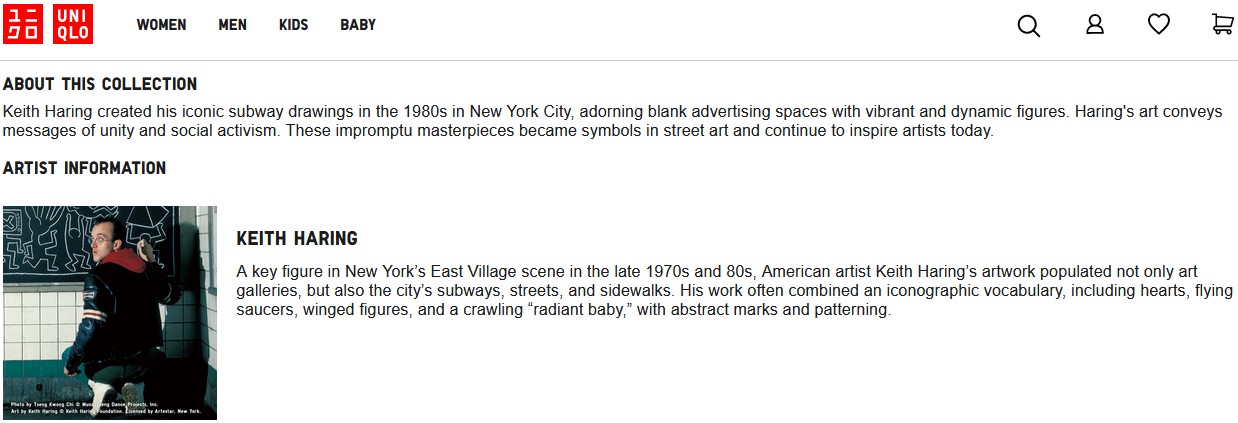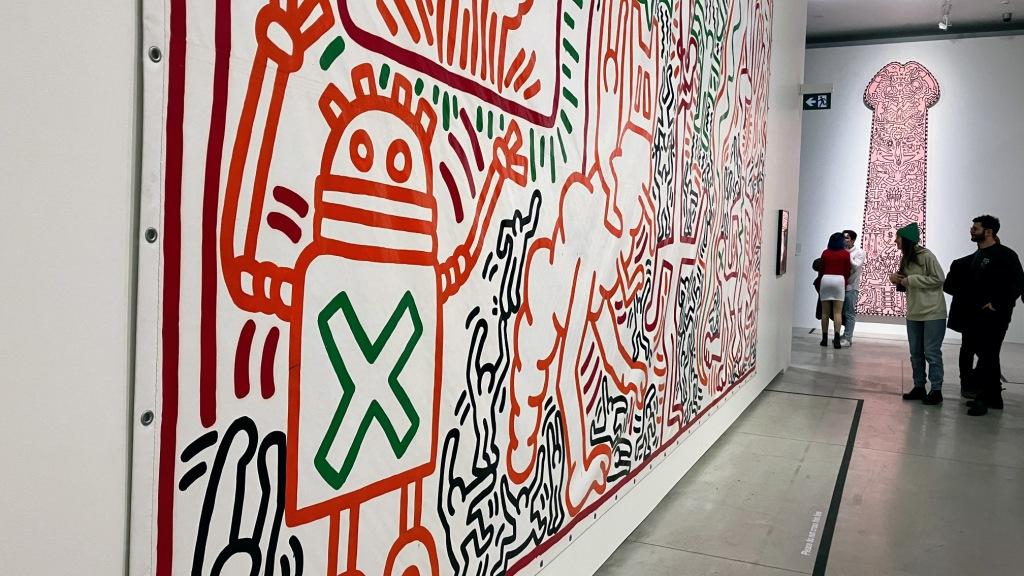As part of my 2024: The Year of Trying New Things project, I decided to attend the Keith Haring: Art is for Everybody exhibition at the Art Gallery of Ontario (on through March 17, 2024). Not knowing much about him, I’d associated his work with Roy Lichtenstein’s comic art and Andy Warhol’s pop art. Warhol was in fact a friend and collaborator, so happily I wasn’t too far off.
In any case, I’m very glad I watched a few YouTube documentaries and listened to the audio tour before I went, as the preparation helped me understand and appreciate what I saw. I came away from the show with a lot of respect for the guy, “the rare artist with the becoming modesty to harness his talent to unpretentious, childlike forms, [but who] can also be breathtakingly intricate” (“Kid Haring” by Ingrid Sischy, Vanity Fair, 1997, as shared by The Keith Haring Foundation).
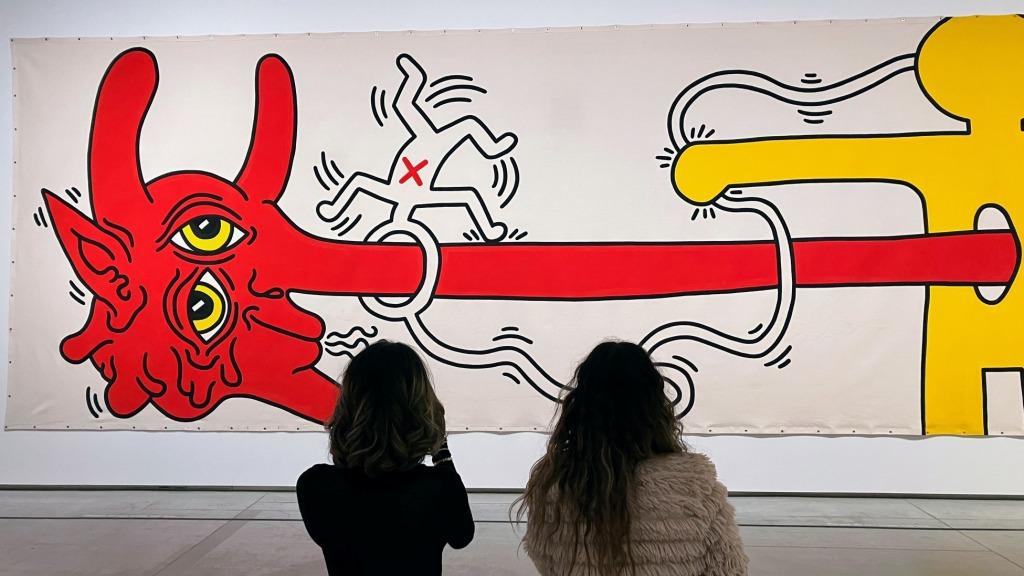
This explanatory text is at the entrance to the AGO exhibition.
American artist Keith Haring (1958-1990) broke down barriers and spread joy through his work, all while addressing complex and urgent issues of his time. Decades after his death, Haring’s art continues to gain recognition around the world. He pushed boundaries during the 1980s by creating work outside of traditional art spaces, using materials such as chalk on blank advertising panels in New York City subways.
This exhibition showcases the breadth of Haring’s career and addresses the major themes in his work, from capitalism and political engagement to sexuality and pop culture. Activism was central to his practice: he used his imagery and celebrity to protest apartheid in South Africa, raise awareness of the crack cocaine epidemic and the AIDS pandemic, and support causes from nuclear disarmament to UNICEF. In just over ten years, Haring produced a remarkable volume of work, guided by the belief that art is essential in making a better world — indeed, that art is for everybody.
Organized by The Broad, Los Angeles, and curated by Sarah Loyer, Curator and Exhibitions Manager, and presented at the AGO by Georgiana Uhlyarik, Fredrik S. Eaton Curator of Canadian Art.
One observation: something about the occasional drips in some of the paintings (as the one below) caught my attention. Running paint is such a reassuringly human and grounding thing to see, like a fingerprint, a natural effect in art created by hand with fresh materials (as opposed to generated in a computer graphics program… which also has its place, of course). Were the drips accidental, the result of painting exuberantly on a vertical surface (i.e. not on the floor), or on purpose / welcomed (which I suspect)?
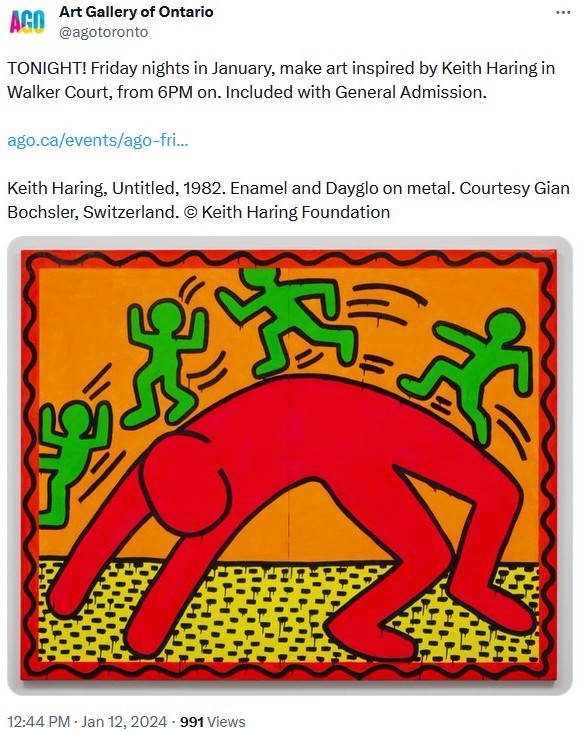
Ironically, and very interestingly, one of the most moving artworks, Unfinished Painting (1989) at the very end of the exhibition, was in the news the next day for related reasons.
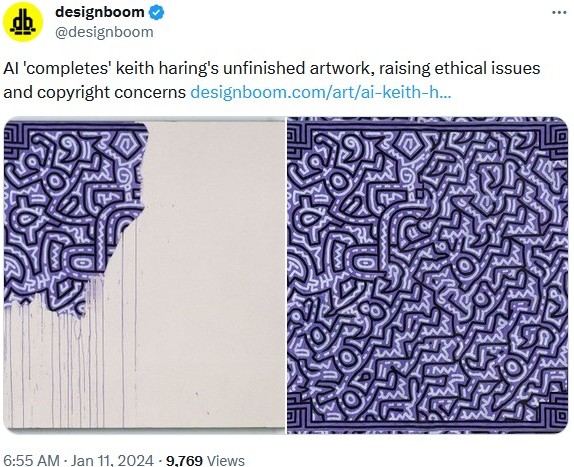
And here’s some explanation:
One of the final panels at the exhibition shared this quotation from Keith Haring.
In the days since I viewed the exhibition, I’ve found myself full of admiration for a person who found his mission, made a living at it, and left a positive impact on the world. Long may his work continue to inspire the rest of us who aspire to do the same.
P.S. I guess my Keith Haring antenna are up, because a couple days later I was surprised to randomly run across this offering at UniQlo (tasteful stuff, as you’d expect from UniQlo, through a licensing agreement with The Keith Haring Foundation).
